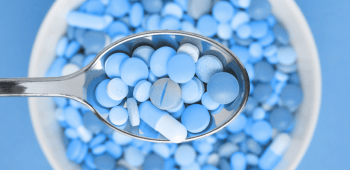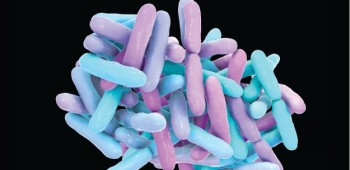Dysbiosis confirmed in paediatric crohn's disease
A less rich and diverse fecal microbiota, including a significantly lower abundance of butyrate-producing bacteria, has been observed in children newly diagnosed with Crohn's disease but not yet treated.
Sources
This article is based on scientific information

About this article
Crohn's disease (CD), an inflammatory condition that can affect any part of the digestive tract, is becoming increasingly common among children. Like all forms of inflammatory bowel disease (IBD), it appears to be closely related to disruptions in the gut microbiota. In order to gain an overview of its structure in the early stage of the disease, a team studied the microbiota in stool samples from 64 untreated children and 18 healthy control subjects.
Reduced diversity
The abundance (number of taxa) and diversity (relative abundance) of microbiota in young patients with CD was lower than in control subjects: 11 genera and 17 species differed significantly between the two groups, with fewer Actinobacteria and Firmicutes and a greater abundance of Enterococcus in the CD group. The authors also report a significant reduction in the abundance of some butyrate-producing genera and species such as Bifidobacterium adolescentis. These results are consistent with those of previous studies carried out on children and adults.
Local inflammation
Furthermore, a decreased abundance of several taxa and lower microbiota diversity are observed when fecal calprotectin levels (an inflammation marker) and disease activity increase, suggesting a link between dysbiosis and inflammation of the gastrointestinal tract. While it remains unclear whether the dysbiosis causes the inflammation or is a consequence of it, the authors suggest a vicious circle, with persistent inflammation reinforcing dysbiosis and vice versa. On the other hand, no change in microbiota diversity is associated with biochemical markers such as the C-reactive protein (CRP), suggesting that local inflammation in the gastrointestinal tract reflected by a high level of calprotectin is more important than the general state of inflammation.
Towards treatments targeting the microbiota?
According to the authors, if a dysbiosis of the intestinal microbiota is one of the risk factors for the development and/or persistence of inflammation in IBD, then treatment targeting microbiota (antibiotics, pro- and prebiotics, fecal microbiota transplant) should be a therapeutic goal. In addition, the advantages of a prophylactic treatment based on microbiota for high-risk groups are clear. Lastly, the absence of Fecalibacterium prausnitzii and B. adolescentis (or even the lower abundance of Roseburia) in the stool may serve as a biomarker of the dysbiosis which signals CD.










